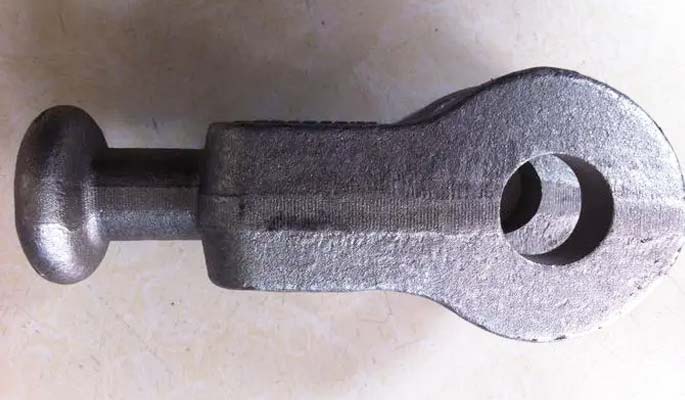- Contact Innally, Let you purchase forgings in China more favorable prices, products more assured!
- Hotline:+(86)15038323776 Email:innally@innally.com
Production technology of electric power fittings forgings
- Category: Metal forging, Steel forgings
- |
- Date: 02/12/2023
the production process of electric power tool forgings includes raw material preparation, heating, forging, heat treatment, machining and testing, as well as surface treatment and protection. Each link requires strict control of process parameters and operating specifications to ensure that the quality and performance of the final forging meet the standard requirements.
Product Details
Power fixture forging is an indispensable and important part of power system, and its production process is very important to ensure the safe and stable operation of power system. The following will introduce the production process of electric power tool forgings in detail.
First, raw material preparation
High quality alloy steel, carbon steel and so on are generally used as raw materials for the manufacture of electric power fittings forgings. When selecting raw materials, indicators such as chemical composition, metallographic structure and mechanical properties must be strictly controlled to ensure that the quality of the final forging meets the requirements.
Two, heating
Heating the prepared raw material is an important step in forging production. The purpose of heating is to make the metal reach a plastic state, which is convenient for subsequent forging processing. It is necessary to control the heating temperature and time during the heating process to avoid overheating or overburning of the metal, affecting the quality and performance of the forging.

Three, forging
Forging is the core link of forging production. By forging, metal undergoes plastic deformation under pressure and impact, resulting in forgings of the desired shape and size. There are two main forging methods: free forging and model forging. Free forging relies on the impact force of the hammer or press to forge, suitable for simple shape forging; Model forging uses a die to form and is suitable for forgings of complex shapes.
- Heat Treatment
Heat treatment is a key step to improve the mechanical properties and internal structure of forgings. By quenching, tempering, normalizing and other heat treatment methods, the hardness, strength and toughness of the forging can be adjusted to meet the requirements of use. In the heat treatment process, the heating and cooling rate should be strictly controlled to avoid defects such as cracks and deformation.
- Machining and testing
Forgings after heat treatment need to be machined, such as cutting, drilling, milling, etc., to achieve accurate size and shape requirements. High-precision machine tools and cutting tools are used in the processing process to ensure processing accuracy and quality. Finally, the quality of the forging is tested, such as appearance inspection, size measurement, mechanical property testing, etc., to ensure that the quality of the forging meets the standard requirements.
- Surface treatment and protection
In order to improve the corrosion resistance and beauty of forgings, surface treatment can be carried out, such as galvanizing, spraying and so on. In addition, protective measures such as anti-rust oil and coating can also be used to extend the service life of forgings.
In summary, the production process of electric power tool forgings includes raw material preparation, heating, forging, heat treatment, machining and testing, as well as surface treatment and protection. Each link requires strict control of process parameters and operating specifications to ensure that the quality and performance of the final forging meet the standard requirements.
nannan
INNALLY mainly provides you with various types of cast and forged parts products. Welcome your inquiries! innally@innally.com
Related Products
Search
Forging center
- Steel forgings
- Aluminium alloy forging
- Titanium alloy forging
- Stainless steel forging
- Copper forging
- Automotive forgings
- Locomotive forging
- Bicycle forgings
- Motorcycle forging
- Rigging and fasteners
- Bearing forging
- Electric power fittings
- Marine forging
- Mechanical forgings for metalworking
- Mining machinery forgings
- Marine engineering forgings
- Construction machinery forgings
Popular product

© 2025. All Rights Reserved.






